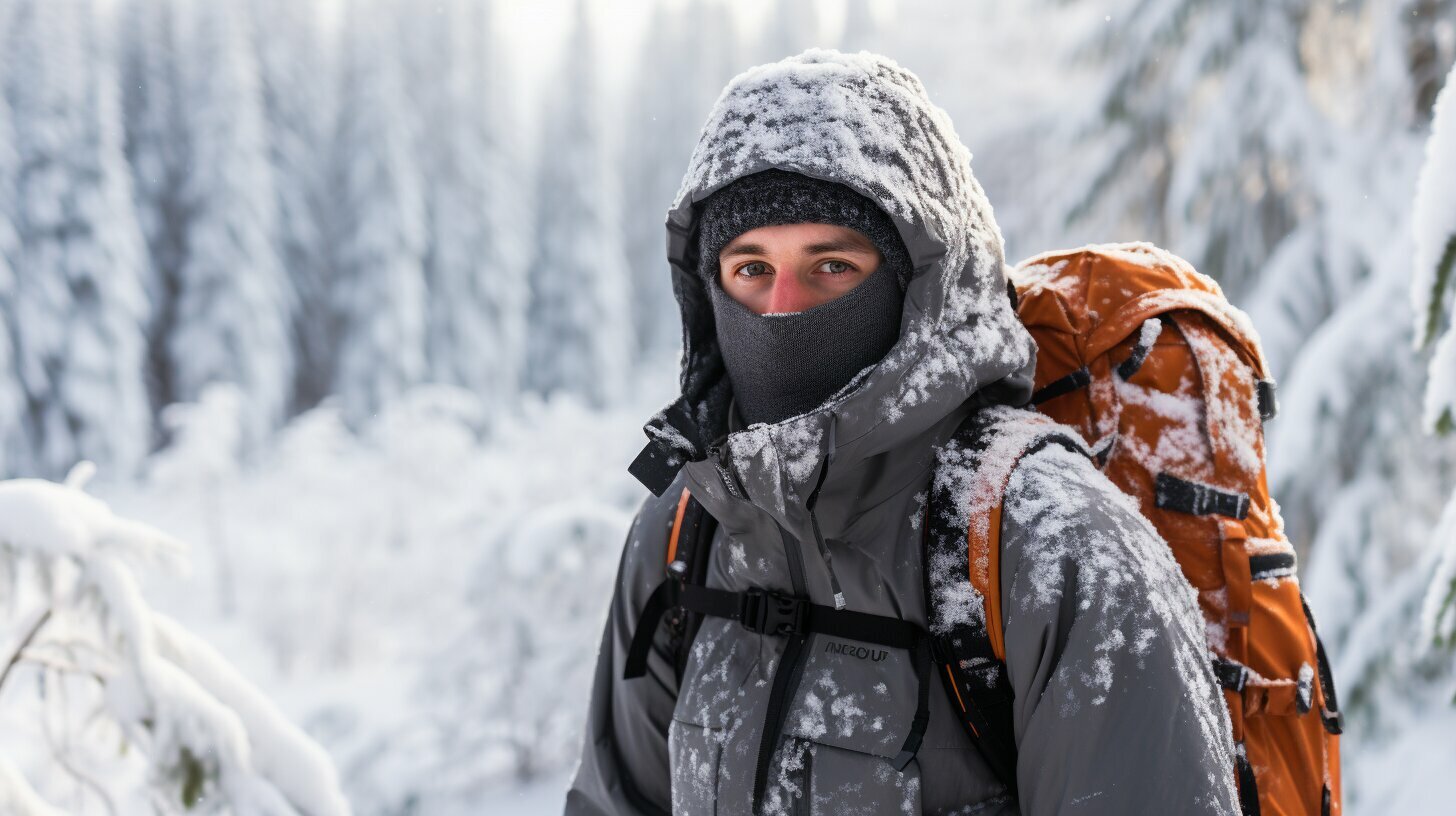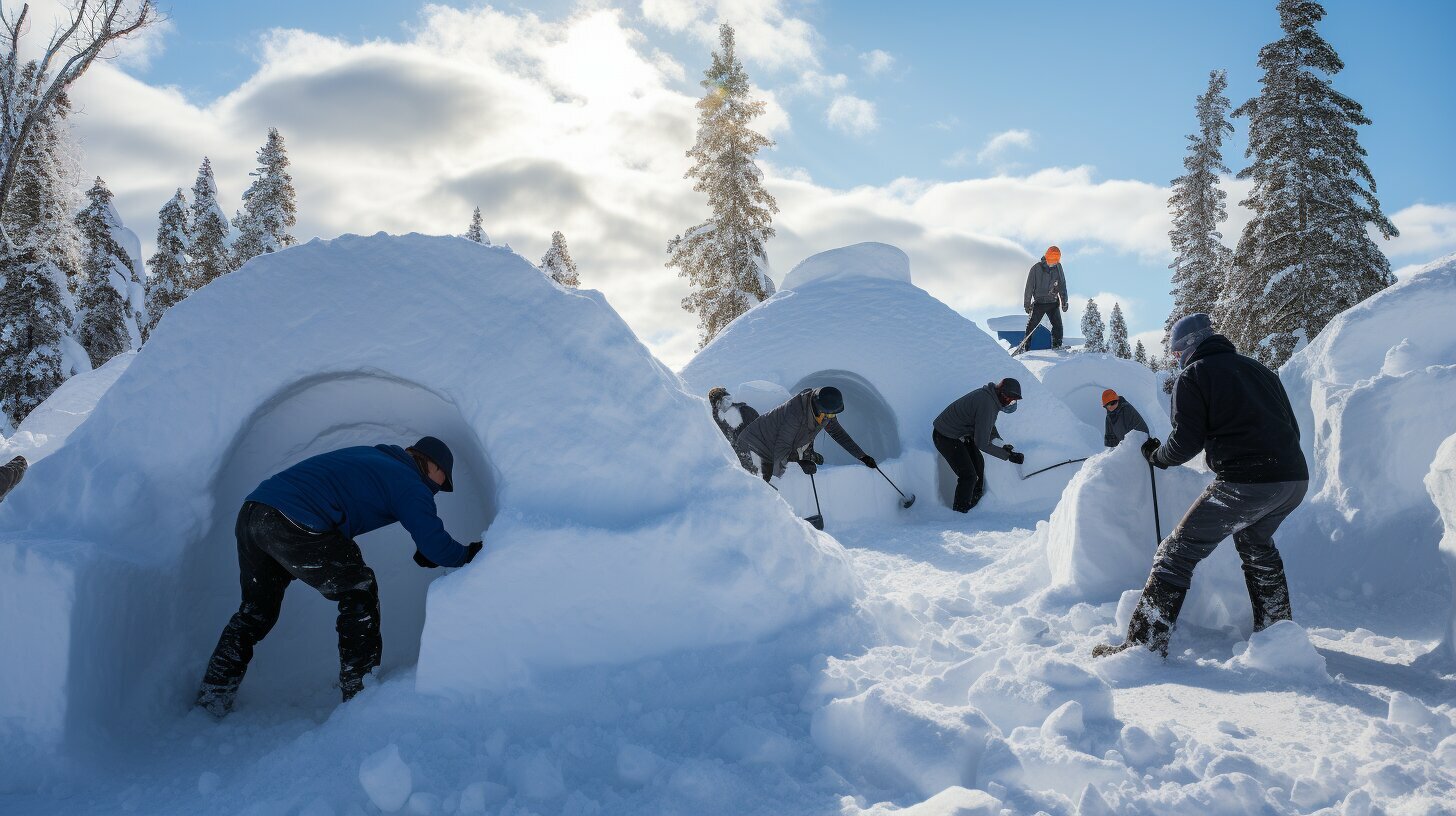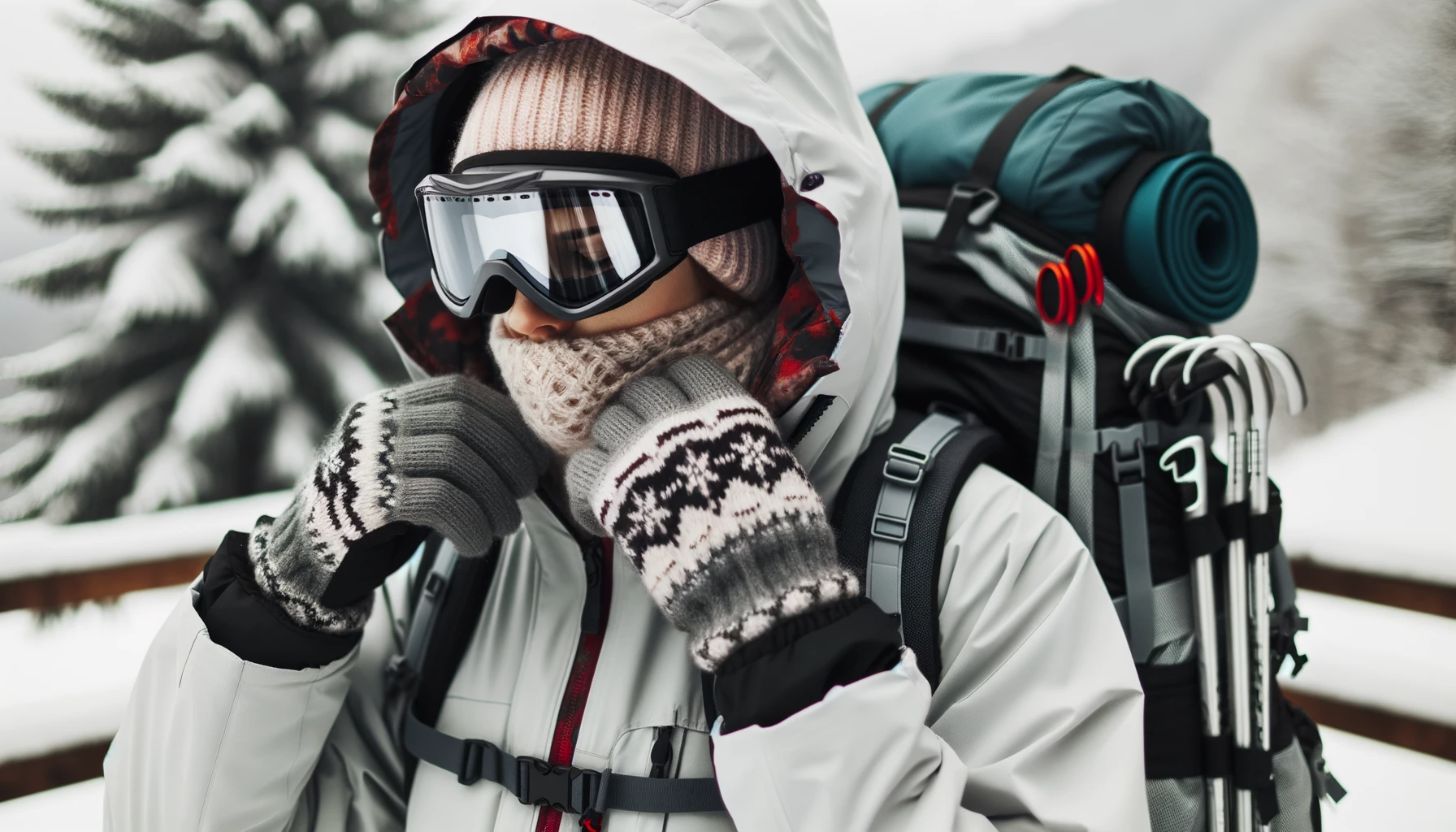Blizzards can be brutal and unpredictable, plunging entire regions into sub-zero temperatures and whiteout conditions. Whether you’re a seasoned veteran or someone who has never experienced a blizzard before, it’s critical to know how to stay safe and be prepared for extreme cold weather conditions.
In this section, we have compiled essential survival tips for blizzards. You’ll learn how to prepare your home and property, create an emergency kit, recognize the signs of hypothermia and frostbite, and stay safe both indoors and outdoors.
Disclosure: When you buy through links on our site, we may earn an affiliate commission.
Key Takeaways
- It’s important to be prepared for blizzards to ensure your safety and well-being.
- Create an emergency kit with essential items such as food, water, and warm clothing.
- Protect your home and property by sealing any air leaks and trimming trees near your house.
- Be aware of the signs of hypothermia and frostbite and seek medical attention if necessary.
- Stay informed through local news outlets and official weather sources to know when a blizzard is incoming.
Understanding Blizzards: What You Need to Know
Blizzards are extreme winter storms characterized by high winds and heavy snowfall. They can last for several hours or days, causing significant disruptions to daily life. To ensure your safety during a blizzard, it’s important to be prepared and understand the key elements of a blizzard survival guide.
Blizzards can cause power outages, road closures, and limited access to essential services. It’s crucial to have an emergency plan in place and prepare your home, vehicle, and personal belongings for the possibility of a blizzard.
Key Elements of a Blizzard Survival Guide
A blizzard survival guide should include the following:
- Emergency supplies such as non-perishable food, water, blankets, and flashlights.
- A communication plan with family members and emergency services.
- Knowledge of local weather and emergency alert systems.
- Safe heating alternatives in case of power outages.
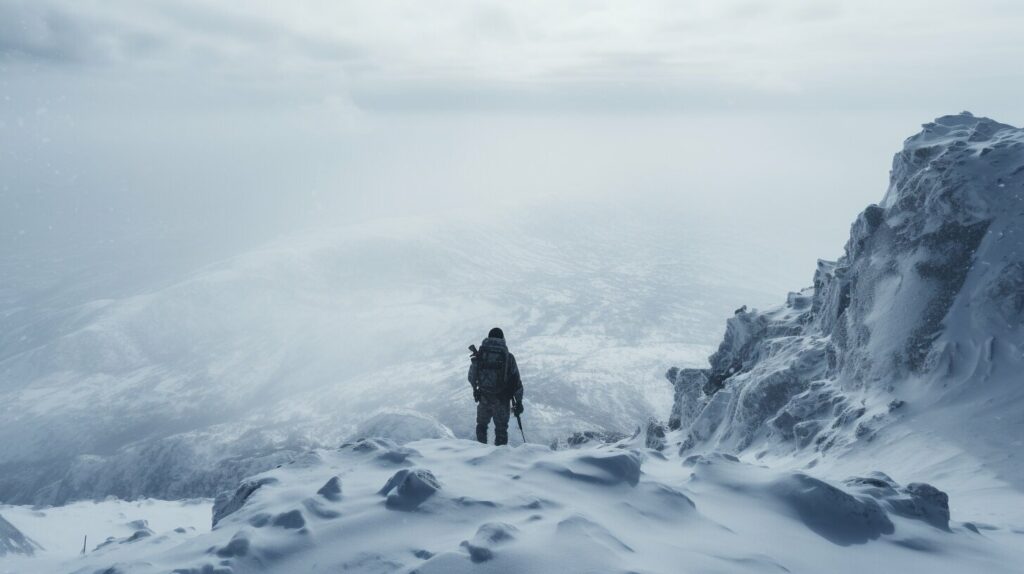
Being aware of the weather conditions and forecasts is essential during a blizzard. Stay up-to-date with the latest information and watch for blizzard warnings or advisories. If you are advised to stay indoors, do so and avoid any unnecessary travel.
Preparing your home and vehicle for a blizzard can also significantly improve your chances of staying safe. Insulate your home and seal any drafty areas to conserve heat, and ensure your vehicle has a full tank of gas and emergency supplies in case of an unexpected breakdown or delay.
By understanding the basics of blizzards and being prepared with a solid emergency plan, you can stay safe and weather the storm.
Preparing Your Home and Property for a Blizzard
Preparing your home and property for a blizzard can make the difference between minimal damage and a potential disaster. With blizzard emergency preparedness in mind, take the following steps to protect your home and property:
- Insulate your home: Insulation helps retain heat inside the home and prevents pipes from freezing. Ensure that your attic, walls, and windows are properly insulated.
- Seal windows and doors: Sealing windows and doors prevent cold air from entering your home. Check for any gaps or cracks and seal them using weather stripping and caulking.
- Trim trees and branches: Trim trees and branches that are close to your home. Snow and ice can weigh down branches and cause them to fall, potentially damaging your home or property.
- Disconnect outdoor hoses: Water left in outdoor hoses can freeze and damage the faucet and pipes leading to it. Disconnect outdoor hoses and drain them completely before the first freeze.
- Clear gutters: Clear gutters of leaves and debris to prevent ice dams from forming. Ice dams can cause water to back up and potentially damage your roof.
- Prepare your car: If you have a garage, park your car inside to protect it from snow and ice. If you must park outdoors, cover your car with a tarp to minimize the accumulation of snow and ice.
Preparing Your Home for a Power Outage
A power outage during a blizzard can be dangerous and uncomfortable. Consider the following tips to help you prepare for a power outage:
- Invest in a generator: A generator can provide backup power in case of an outage. Ensure that you have enough fuel to last the duration of the outage.
- Stock up on non-perishable food: During a power outage, your refrigerator and freezer may not work. Stock up on non-perishable food items such as canned goods and dry goods.
- Have a backup heating source: A backup heating source such as a wood-burning stove or kerosene heater can provide warmth during a power outage. However, be sure to follow manufacturer instructions and exercise caution.
- Have extra blankets and warm clothing: Without heat, your home can quickly become cold. Have extra blankets and warm clothing on hand to stay warm.
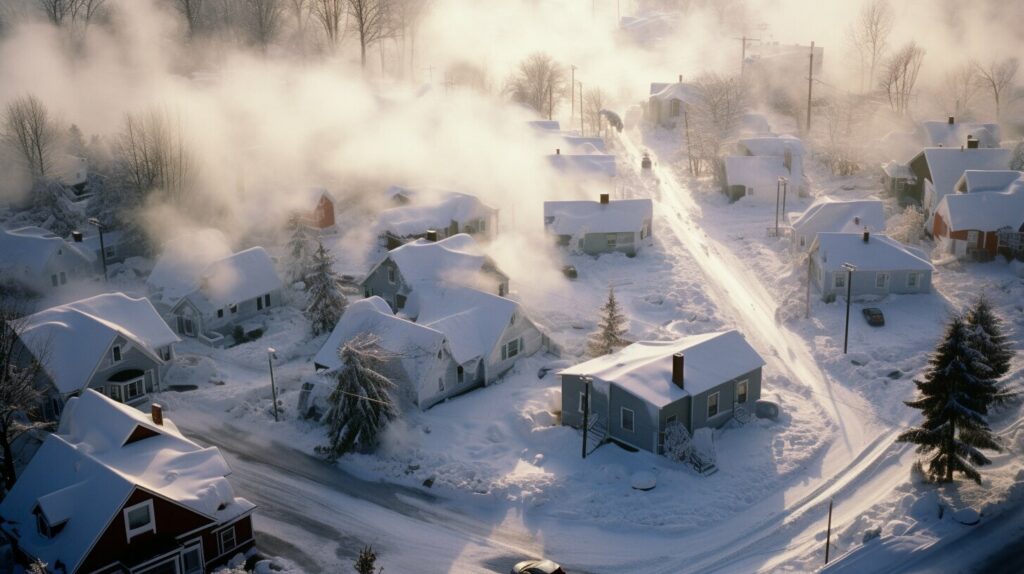
“An ounce of prevention is worth a pound of cure.” – Benjamin Franklin
By taking steps to prepare your home and property for a blizzard, you can minimize potential damage and keep yourself and your loved ones safe. Remember to have a plan in place and stock up on necessary supplies before a storm hits to ensure you are ready for whatever comes your way.
Creating a Blizzard Emergency Kit
Having a well-stocked emergency kit can make all the difference during a blizzard. You need to be prepared for power outages, blocked roads, and other emergencies that can arise in the wake of a severe winter storm. Below is a list of essential items to include in your kit.
Winter Clothing and Bedding
- Warm hats, gloves, and scarves: Protect your extremities from frostbite and hypothermia.
- Heavy coat: Choose a coat that is waterproof and insulated with materials like down or synthetic fibers.
- Warm socks and boots: Keep your feet warm and dry with wool or synthetic socks and waterproof boots.
- Blankets or sleeping bags: Stay warm indoors if the heat goes out or in case you need to evacuate.
Food and Water
Stock up on non-perishable food items and potable water. You should aim to have at least a three-day supply of food and water per person in your household.
- Canned goods: Choose items that are easy to prepare, like soups, stews, and canned fruits and vegetables.
- Granola bars: These are a good source of protein and are easy to store and eat.
- Water bottles: Stock up on bottled water or fill up containers with potable water in advance.
Emergency Supplies
Your emergency kit should also include several supplies that can help you in case of an emergency, including:
- Flashlights and extra batteries: Make sure you have several flashlights and enough batteries to power them.
- Portable radio: Stay informed with a battery-powered or hand-crank radio that can pick up weather updates and emergency alerts.
- First-aid kit: Be prepared for injuries with a basic first-aid kit that includes bandages, antiseptic ointment, and other supplies.
- Medications: Make sure you have a sufficient supply of any prescription medications you take regularly.
- Charged power banks for your phone and electronic devices: You don’t want to be without your phone or other electronics during an emergency.
Make sure your emergency kit is easily accessible and store it in a waterproof container. Check your kit annually to restock items that have been used or expired.
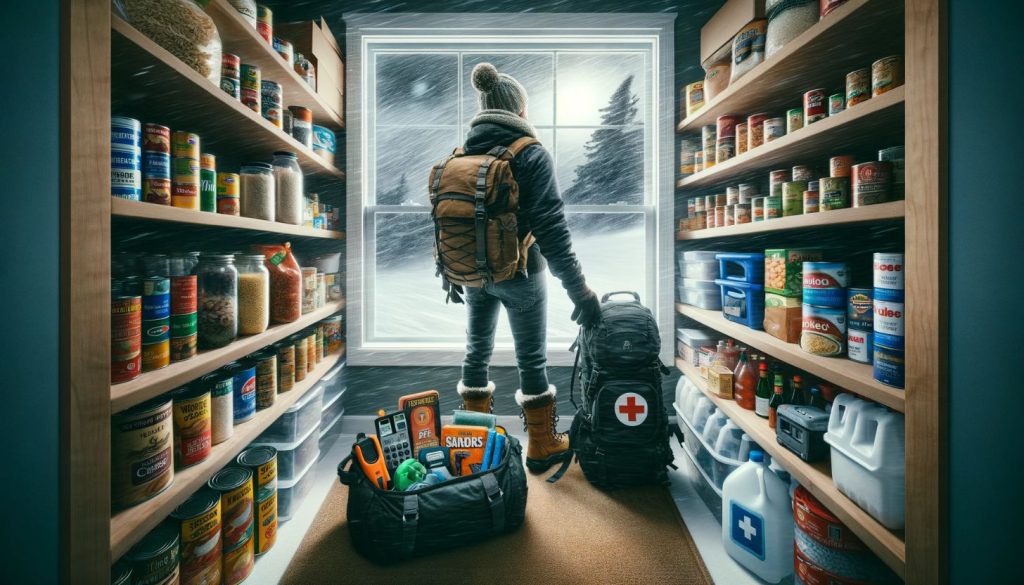
Staying Safe Indoors During a Blizzard
When a blizzard hits, the safest place to be is inside your home. However, staying indoors for an extended period of time can come with its own set of challenges. By following these blizzard safety tips, you can keep yourself and your family safe and comfortable until the storm passes.
Keeping Warm
One of the biggest dangers during a blizzard is hypothermia, which occurs when your body temperature drops too low. To keep warm:
- Dress in layers and use blankets or extra clothes to insulate yourself
- Use a generator, fireplace, or wood stove for heat if possible (make sure to follow safety guidelines and keep proper ventilation)
- Avoid using space heaters, which can be a fire hazard if not used correctly
Conserving Resources
During a blizzard, resources such as food, water, and electricity may be limited. To conserve resources:
- Use battery-powered or hand-cranked electronics instead of electricity if possible
- Stock up on non-perishable food items and bottled water before the storm hits
- Limit the amount of times you open and close your refrigerator and freezer to keep food from spoiling
Dealing with Power Outages
In the event of a power outage, it’s important to:
- Use flashlights instead of candles to avoid the risk of fire
- Turn off all electronics to prevent power surges when the power comes back on
- Never use portable generators or grills indoors, as they can produce deadly carbon monoxide fumes
Remember, staying indoors during a blizzard is crucial for your safety. By following these blizzard safety tips, you can stay warm, conserve resources, and deal with power outages until the storm passes.
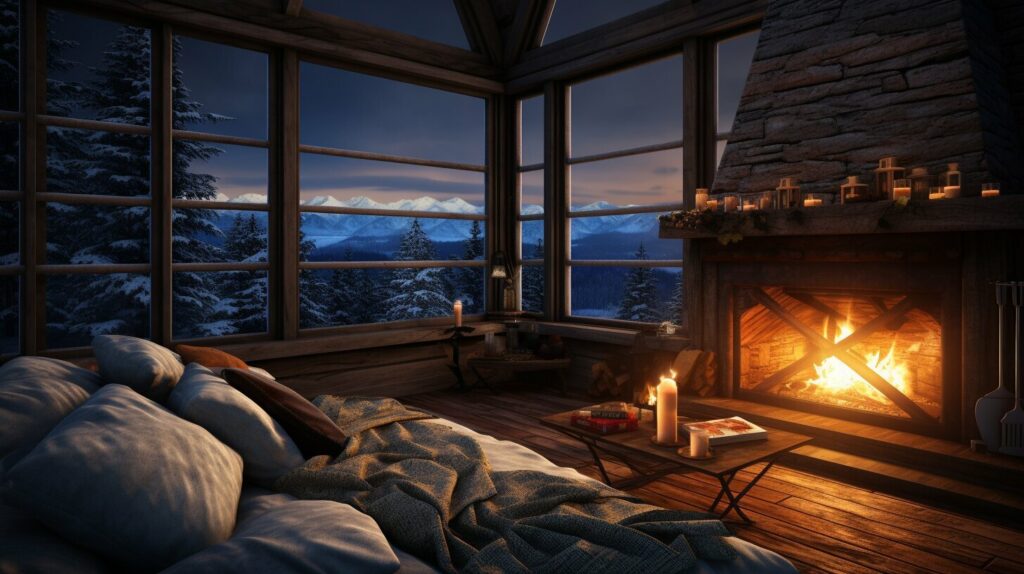
Traveling During a Blizzard: Dos and Don’ts
When a blizzard hits, it’s best to stay indoors and avoid traveling if possible. However, sometimes circumstances may require you to venture outside. Whether it’s for work or an emergency, it’s crucial to take necessary precautions to ensure your safety.
Here are some dos and don’ts to keep in mind when traveling during a blizzard:
- Do: Check the weather forecast and road conditions before leaving.
- Do: Inform someone of your travel plans and expected arrival time.
- Do: Keep your gas tank full and have extra supplies in your car such as blankets and snacks.
- Do: Bring a fully charged phone and a portable charger.
- Do: Drive slowly and carefully, keeping a safe distance from other vehicles.
- Do: Pull over and wait for the storm to subside if you’re having difficulty driving.
- Do: Use your hazard lights to make your vehicle more visible to others on the road.
- Don’t: Travel alone if possible. It’s always safer to have a companion.
- Don’t: Take shortcuts or alternate routes that are unfamiliar.
- Don’t: Panic if you become stranded. Stay in your car and call for help.
- Don’t: Leave your car unless absolutely necessary. Walking in a blizzard can be extremely dangerous.
- Don’t: Overexert yourself if you need to shovel snow or push your car out of a snowbank. Take breaks often.
By following these dos and don’ts, you can minimize your risk and increase your chances of safely reaching your destination. Remember, it’s always best to avoid traveling during a blizzard if possible, but if you must, use caution and be prepared.
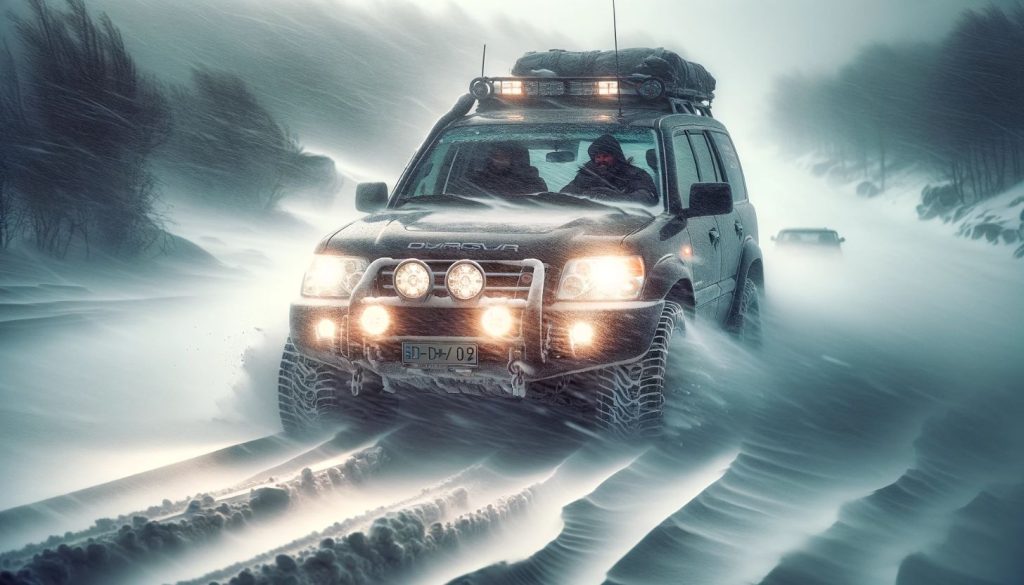
Protecting Yourself Outdoors: Essential Tips
When you have no option but to venture outdoors during a blizzard, protect yourself from the cold and adverse weather conditions. Here are some essential tips to keep in mind:
- Dress in layers: Layering clothes helps trap body heat and keeps you warm. Wear a base layer made of moisture-wicking fabric, a middle layer made of wool or fleece, and a waterproof outer layer.
- Wear appropriate footwear: Choose boots with good traction and insulation to keep your feet dry and warm.
- Protect your extremities: Wear a hat, gloves, and a scarf to cover your head, hands, and face.
- Take breaks: If you start feeling too cold, take a break indoors and warm up before continuing your outdoor tasks.
- Avoid overexertion: Shoveling snow or other strenuous activities can increase your risk of heart attack in already cold weather. Take frequent breaks and don’t overdo it.
Comparison of Different Footwear Types for Winter Conditions
| Type of Footwear | Pros | Cons |
|---|---|---|
| Winter boots | Waterproof, insulated, and provides good traction | Can be heavy and bulky |
| Hiking boots | Provides good ankle support and traction | Not waterproof or insulated |
| Running shoes | Lightweight and comfortable | No ankle support or insulation |
Remember, staying safe during a blizzard requires taking necessary precautions and being adequately prepared. Follow these essential tips for protecting yourself outdoors and always prioritize your safety.
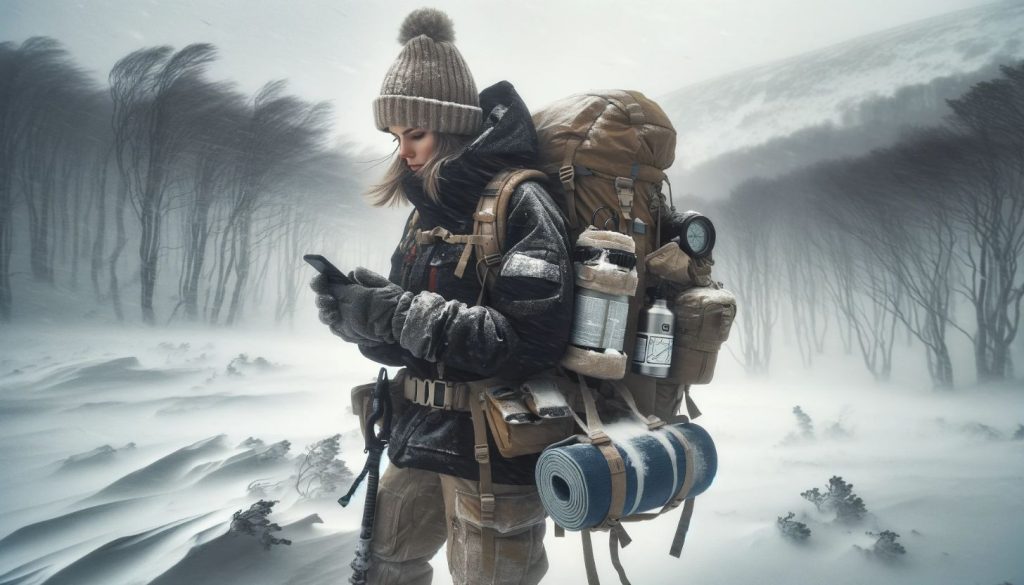
Signs of Hypothermia and Frostbite: Recognizing the Symptoms
When braving the cold, it’s important to know the signs and symptoms of hypothermia and frostbite. These serious conditions can occur when your body loses heat faster than it can produce, leading to tissue damage or other complications. Here’s what to look out for:
Symptoms of Hypothermia
Hypothermia occurs when your body temperature drops below normal levels (95°F or 35°C). Symptoms of mild hypothermia include:
- Shivering and trembling
- Nausea or dizziness
- Increased heart rate and breathing
- Fatigue or weakness
If left untreated, hypothermia can become severe and lead to confusion, slurred speech, shallow breathing, and even death. Seek immediate medical attention if you suspect hypothermia.
Symptoms of Frostbite
Frostbite occurs when skin and underlying tissues freeze due to exposure to the cold. Symptoms of frostbite include:
- Numbness or tingling in the affected area
- Skin that appears white, grayish-yellow, or waxy
- Hard or blistering skin
Frostbite can lead to permanent tissue damage and even amputation if not treated promptly. If you suspect frostbite, seek immediate medical attention.
Remember, prevention is key when it comes to hypothermia and frostbite. Dress warmly, stay dry, and limit your time outdoors in extreme cold weather conditions.
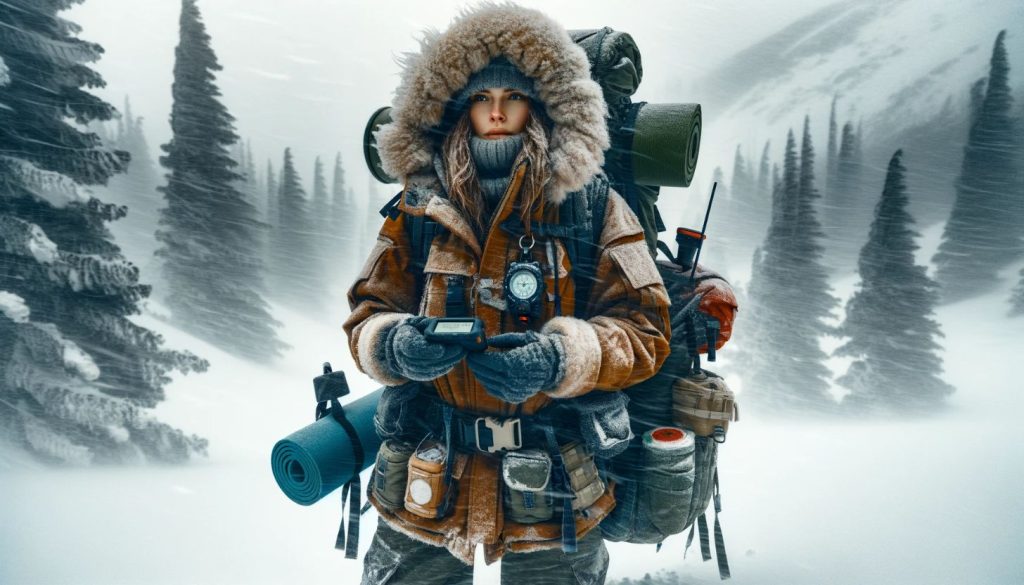
After the Blizzard: What to Do
Now that the blizzard has passed, it’s important to take necessary steps to ensure your safety and recovery. Here are some essential blizzard safety tips and blizzard preparedness actions to follow:
- Check for any injuries or damage: Before doing anything else, assess your own health and the safety of those around you. If someone is injured, seek medical attention immediately. Also, check your home and property for any damage caused by the blizzard.
- Clear snow safely: If you need to clear snow from your property, do so safely. Use a shovel or snow blower with caution, and don’t overexert yourself. Watch out for ice patches and uneven surfaces that could cause slips and falls.
- Check for power and water: After a blizzard, power outages and water supply disruptions are common. Check your utility lines and pipes to ensure they’re still intact and functioning. If you notice any damage, contact the appropriate authorities as soon as possible.
- Restock your emergency kit: If you used any items from your emergency kit during the blizzard, restock them immediately. Make sure you have enough supplies to last at least 72 hours in case of any future emergencies.
- Be cautious when driving: Road conditions can still be hazardous even after a blizzard has passed. Avoid driving unless necessary, and if you do need to drive, use caution and drive slowly.
- Stay informed: Keep an eye on weather updates and warnings, as well as any news regarding the aftermath of the blizzard. Stay informed and be prepared for any further developments.
Following these blizzard safety tips and taking necessary blizzard preparedness actions can help ensure your safety and recovery after a blizzard. Remember to always prioritize your safety and take the necessary precautions to protect yourself and your loved ones.
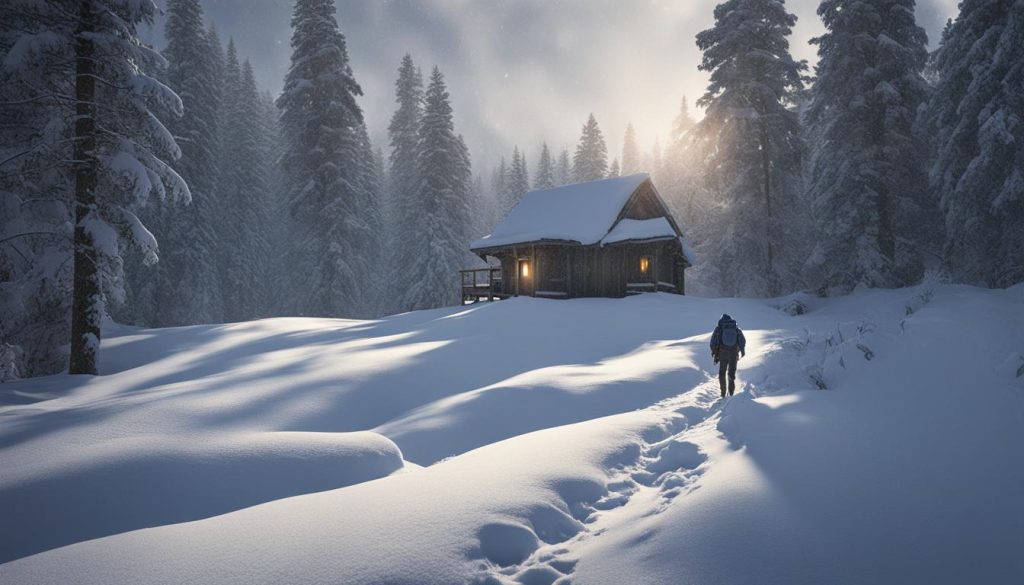
Conclusion
Winter storms can be dangerous, especially blizzards that bring extreme cold, heavy snow, and strong winds. However, with the right knowledge and preparation, you can master the storm and stay safe.
In this article, you learned essential survival tips for blizzards, including how to prepare your home and property, create a blizzard emergency kit, and stay safe indoors and outdoors. You also learned how to recognize the signs of hypothermia and frostbite and what to do after the blizzard has passed.
Remember, the key to surviving a blizzard is to plan ahead, stay informed, and be prepared. Stay tuned to weather forecasts and heed any warnings or advisories issued by emergency officials. Keep your emergency kit stocked and easily accessible.
By following the tips in this article, you can protect yourself and your loved ones during a blizzard. Remember to dress warmly, avoid unnecessary travel, and conserve resources. Keep a close eye on your surroundings and be ready to take action if necessary.
With these blizzard safety tips, you can confidently face even the harshest winter storms. Stay safe and stay prepared!
FAQ
What is a blizzard?
A blizzard is a severe snowstorm characterized by strong winds, low visibility, and frigid temperatures. It typically lasts for several hours and can create dangerous conditions.
How should I prepare my home for a blizzard?
To prepare your home for a blizzard, ensure that windows and doors are properly sealed to prevent drafts. Insulate pipes to prevent freezing, stock up on non-perishable food and water, and have a backup heating source in case of power outages.
What should I include in my blizzard emergency kit?
Your blizzard emergency kit should include essential items such as blankets, flashlights, batteries, a first aid kit, non-perishable food, water, a battery-powered or hand-crank radio, and any necessary medications.
How can I stay safe indoors during a blizzard?
To stay safe indoors during a blizzard, keep your home well-heated, dress in layers to conserve body heat, avoid using candles for lighting, and be mindful of carbon monoxide poisoning when using alternative heating sources.
What precautions should I take if I have to travel during a blizzard?
If you must travel during a blizzard, ensure that your vehicle is in good condition and has a fully stocked emergency kit. Drive slowly and cautiously, keep a safe distance from other vehicles, and let someone know your travel plans.
How can I protect myself when outdoors during a blizzard?
When outdoors during a blizzard, dress in warm and waterproof clothing, cover exposed skin to prevent frostbite, and limit your time outside. Be aware of signs of hypothermia and seek shelter immediately if necessary.
What are the symptoms of hypothermia and frostbite?
Symptoms of hypothermia include shivering, confusion, drowsiness, slurred speech, and loss of coordination. Frostbite typically affects extremities and presents with numbness, tingling, discoloration, and blisters.
What should I do after a blizzard?
After a blizzard, check on the well-being of family, friends, and neighbors. Clear walkways and driveways of snow and ice, and be cautious of falling icicles. Monitor local news and follow any instructions or advisories.


